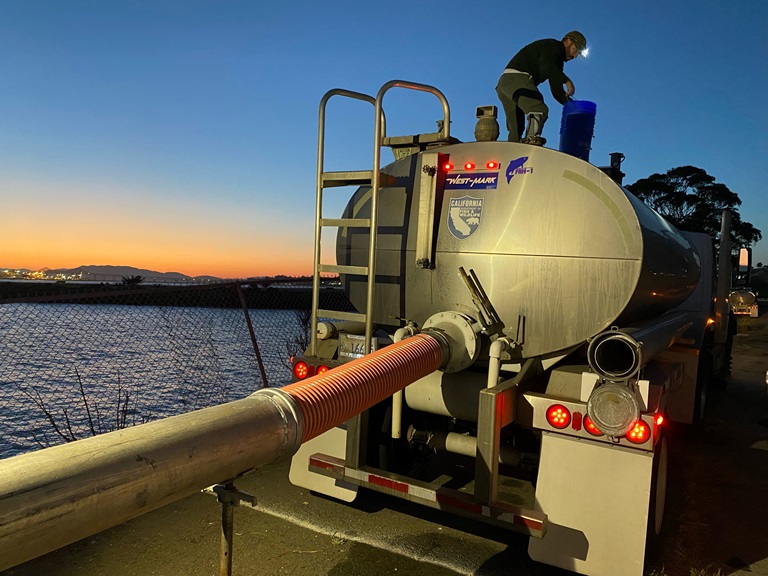
Smolts (juvenile salmon able to return to the ocean) are loaded onto specialized trucks and transported to their release location in the San Pablo Bay.
Oroville’s Feather River Fish Hatchery (FRFH) released over 11.3 million young Chinook salmon smolts into the waters of the Feather River, San Pablo Bay, and San Francisco Bay from March to June 2022 to support Northern California and Pacific Ocean fisheries. These fish include both spring and fall-run Chinook salmon.
As part of their statewide hatchery operations to support California’s salmon populations, staff with the California Department of Fish and Wildlife (CDFW) successfully hatched millions of Chinook salmon at the Department of Water Resources (DWR) facility, raising the fish at the hatchery until they were ready for planting. The smolts (juvenile salmon able to return to the ocean) were loaded onto specialized trucks and transported to their various release locations in the Feather River, San Pablo Bay and San Francisco Bay.
Transportation to the Bays, especially in drought conditions such as this year, improves survival by avoiding predators and numerous other obstacles and dangers in the Feather River, Sacramento River, and Delta. To increase survivability for Bay releases, the department uses multiple methods including tracking temperatures and water quality, monitoring tides, night releases, and using net pens (temporary holding pens) to help acclimate the fish to saltwater prior to release.
From these release locations, the smolts will make their way out to the Pacific Ocean where they will feed and grow for two to five years before instinctively returning back to the Feather River to spawn and complete their life cycle.
“The Chinook Salmon produced at the Feather River Hatchery are an integral component of California’s salmon,” said Casey Campos, Environmental Scientist for DWR’s Feather River Program. “Feather River Hatchery salmon consistently and substantially contribute to the commercial and sport fishery catch in California.”
The FRFH is a partnership operation between DWR and CDFW to mitigate fish migration impacts from the construction of Oroville Dam in the 1960s. DWR built and maintains the Feather River Fish Hatchery and provides funding for hatchery operations.
“The Feather River Fish Hatchery is one of the most productive and successful fish hatcheries on the West Coast of the United States,” said Eric See, Environmental Program Manager for DWR’s Oroville Field Division.
CDFW staff conduct the fish spawning, rearing, and stocking activities. “The dedication of Feather River Fish Hatchery staff to enhance the Feather River salmon fishery through countless hours of effort fulfills our mission to support their natural life cycle as well as contribute economic and recreational benefits to California” said FRFH Manager Anna Kastner.
The Hatchery has been in operation since 1968 and has expanded its programs to include the planting of triploid inland Chinook salmon in Lake Oroville to improve recreational, cold water fishing opportunities at the Lake. In May, 128,000 Chinook salmon fingerlings were planted in Lake Oroville.
Information about CDFW’s activities at the Hatchery can be found on their website. An informational video on the Hatchery’s history and operations can be found on the DWR YouTube channel.


 Advertising
Advertising